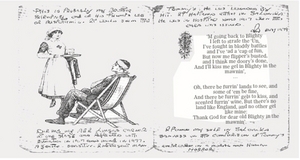Search Results for 'Eamonn McNally'
2 results found.
Six Furey brothers did not return to Loughrea

When it comes to the story of Galway and World War I there is no better man than William Henry. He came upon ‘the secrets in the attic shoe box’ some years ago when writing in a parish magazine he mentioned a relation of his in that war, and surprisingly opened a Pandora’s Box. People met him on the streets and told him that their grandfather, great-uncle, or cousin, or family friend also fought in that war. They had a box of their medals and uniform, letters or diaries somewhere at home.
Animals at war, virgins in Loughrea, poitín, and peace at the ‘Augi’...
World War 1 is the backdrop for the London box office success War Horse. It’s the story of bravery, loyalty and a mutual bond that grew between a young farm boy and his horse. But it is the highly imaginative and skilful way that the story is presented that has caught London’s imagination. The play is based on a book by Michael Morpurgo; and a recent acknowledgement by the public of the role animals have played in war, from the horse, the mule, the dog, the pigeon, even the humble glow worm used by sappers in No Man’s Land as they drew maps in the dark*. During the merciless, and relatively recent Battle of Stalingrad, (July 1942 to February 1943), 207,000 horses were killed on the German side alone (the human cost was an unimaginable one million). Animals are still used to help solders navigate rough terrain, or for dolphins to seek out mines, and dogs to sniff out contraband.

